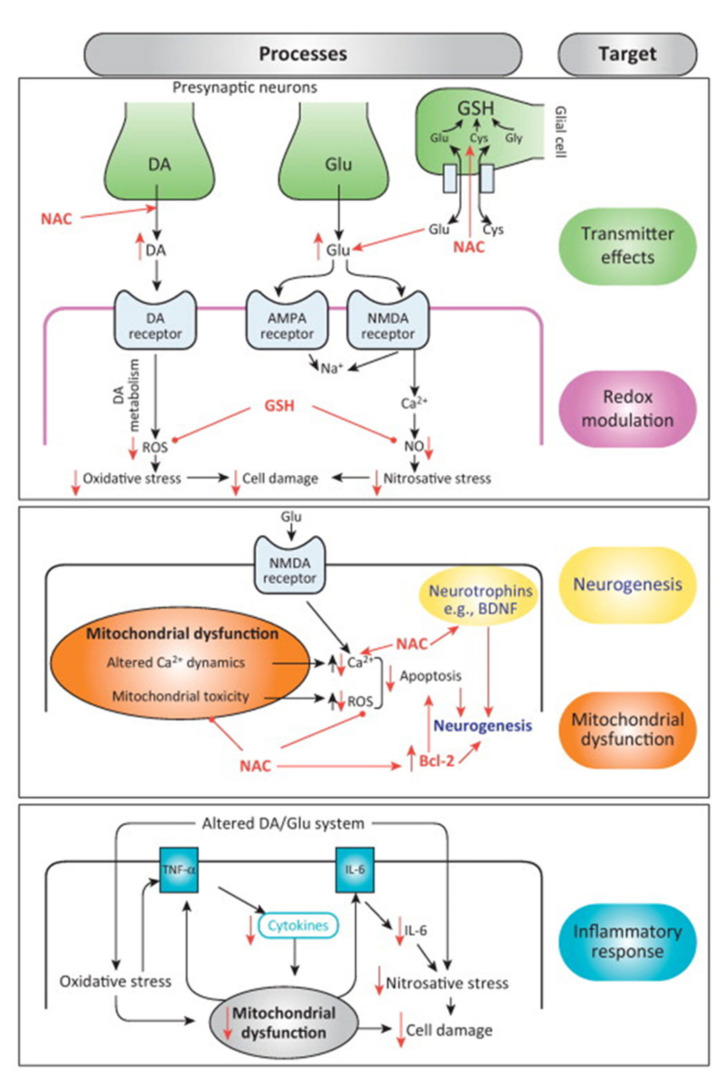Fig. (2).
Proposed pathophysiologic targets of N-acetylcysteine (NAC). The various mechanisms by which NAC acts as a neurotransmitter, modulates redox reactions, promotes neurogenesis, corrects mitochondrial dysfunction, and dampens the inflammatory response are described in the text.
Adapted from Berk M, et al. Trends. Pharmacol. Sci., 2013, 34(3), 167-177. ® Elsevier Inc.
AMPA, 2-amino-3-hydroxy-5-methyl-4-isoxazolepropionate; BDNF, brain-derived neurotrophic factor; Bcl-2, B cell lymphoma 2; Ca, calcium; Cys, cysteine; DA, dopamine; Glu, glutamate; Gly, glycine; GSH, glutathione; IL, interleukin; NAC, N-acetylcysteine; NMDA, N-methyl-D-aspartate; NO, nitrous oxide; ROS, reactive oxygen species; TNF, tumor necrosis factor. (A higher resolution / colour version of this figure is available in the electronic copy of the article).

